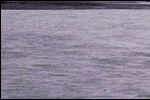
| Home
Mission 2007 Team Research Sources Progress Journal |
|
Research Land
Forms and Vegetation Overview: Several land
form and vegetation types occurring within the region. -Thaw Lake
Plain: numerous thaw lakes, drained lake basins, and expanses of low
centered, ice-wedged polygons. Vegetation: aquatic and wet tundra
species including pendant grass, aquatic sedges, cottongrass, and a few
herbaceous plants and mosses. -Hilly Coastal
Plain: gently rolling hills and poorly developed ice-wedge polygons.
Vegetation: several varieties of willows and herbaceous plants. -Foothills:
hills separated by drainage channels giving the hills a
"ribbed" appearance. Vegetation: sedge tussocks, dwarf shrub
willow, birch, and alders. Height and density of these plants are
dependent upon the protection given by the surrounding slopes. (Some
willows may reach six feet, while dwarf shrubs on the coastal plain may
rarely exceed a few inches.) -River Flood
Plains: barren deltas, braided river channels, and the terraces and
alluvial deposits associated with old river channels. Vegetation: alpine
tundra. Flora: ¡§Due to the
extreme cold, short growing season and nutrient-poor soils, Arctic
vegetation is extremely fragile. Plant communities scarred by bulldozer
tracks, oil spills and other human activities can take decades to
recover.¡¨ Source:
http://oz.plymouth.edu/~lts/conservation/Ecosystems/northslope.html
Vegetation
on the arctic tundra is highly diverse.
The shrub tundras are dominated by deciduous vascular plants.
Slightly warmer soil temperatures, deeper thaw, and more rapid N
mineralization associated with the high water flow rate in water track
and river bar localities cause denser canopies and higher total foliar
N. The
differences in canopy structure between the graminoid-dominated wetland
tundras and the mixed tussock tundra communities are probably related to
drainage characteristics and their effects on nutrient availability The
highly heterogeneous nature of the heath sites is probably determined by
their different degrees of exposure on ridge and hill tops.
Microtopography affects the growth and structure of heath, with
sheltered hollows causing denser vegetation and ridge tops causing
sparse canopies. (Shaver et al., 1996) (Source:
Williams, M.; Rastetter, E. Vegetation characteristics and primary
productivity along an arctic tarnsect: implication for scaling-up.
Journal of Ecology 1999 87: 885-898.) Photosynthesis and
Respiration in Mosses and Lichens Roles
of bryophytes and lichens: ¡§Bryophytes
and lichens constitute a large part of the total biomass of present-day
tundras, and in Rangifer distribution areas the latter are an
important part of the food web. They
are important in the structure and function of the ecosystems because of
their effects as insulators and filters.
Their insulating properties is partly form increased reflectance
and partly from the numerous air pore space when dry.¡¨
à
soil under bryophyte and lichen mats tends to be cold and moist. -
affect
nutrient cycling of the ecosystem by intercepting aerial deposition and
leaching from dripping aboveground vascular plant parts(Cowles, 1984;
Rosswall and Granhall, 1980) -
subsequently
released upon the decomposition of tissues(exceedingly slow process
largely due ot the chemical composition) -
lichens
with cyanobacterial symbionts and bryophytes with cyanobacterial
associations provide the main input of nitrogen into the
ecosystem(Alexander et al., 1978; Baselier et al., 1978,; Kallio, 1975) -
lichens,
and to lesser extent bryophytes, have also been shown to inhibit growth
of neighboring vascular plants and thus further reduce ecosystem
productivity -
Photosynthesis
and Respiration General
pattern ¡§There
is a great deal of similarity in the CO2 exchange patterns of bryophytes
and lichens(Longton, 1992). Both have simple structures and little
control over water loss. They
are metabolically active when wet; short respiratory burst is sometimes
experience when they are
demoistened after desiccation during which internal activity Is quickly
resumed. As they dry out,
they first increase their net CO2 exchange rate, reach a maximum net cO2
exchange rate at intermediate water contents, and then with further
drying they decrease their activity, which eventually ceases.
Any further change in moisture regimes will affect their
distribution patterns and hence the cryptogamic species composition of
arctic vegetation. ((relation
to the change in water supply as a result of drilling and ice-road
building activities??))
Arctic bryophytes show lower rates of photosynthesis under ideal
short-term conditions than do their subarctic, temperate, and tropical
conspecifics(Oechel and Sveinbjornsson, 1978; Sveinbjornsson, 1980),
whereas the present authors have found similar rates in congeneric
arctic and tropical lichens(unpublished data) and Lechowicz(1982) found
no latitudinal differences in maximum photosynthetic rates among lichen
species. Arctic
bryophytes and lichens exhibit distinct temperature optima, which are
lower than those of temperate conspecifics and congenerics(Lechowicz,
1982; Sveinbjornsson and Oechel, 1980), and they are able to
photosynthesize at lower temperatures than can temperate ones.¡¨ (Source: OECHEL,
W.C., CALLAGHAN, T., GILMANOV, T., HOLTEN, J.I., MAXWELL, B.,MOLAU, U.,
SVEINBJORNSSON, B., Global Change and Arctic Terrestrial Ecosystems P.
114-115) Summary: In
order to understand the ANWR ecosystem, it is also necessary to
investigate the energy and nutrient cycles.
The carbon balance of the ecosystem have been highly influenced
by global climate changes and CO2 content changes.
The arctic contains 11% of the world¡¦s organic matter pool, and
within the arctic tundra ecosystems, there are both carbon sinks and
carbon sources. Vegetation
changes in the Alaskan tussock tundra over the past decade has brought
about important feedbacks on the region¡¦s biogeochemical cycles,
through altered rates of carbon and energy exchange between biosphere
and atmosphere. Modeling
analysis suggests that the source/sink strength of tundra depends on
changes in photosynthesis that result from the partitioning of nitrogen
between vegetation and soils, and on changes in soil moisture, which
affect soil respiration rates. All
of these factors may be affected by machine and human activity in the
region and disturbances in the permafrost. Nutrient
cycling and fertilization studies in arctic ecosystems show that plant
growth is strongly limited by nutrient availability.
Such activity depends highly on decomposition, nitrogen
mineralization, phosphorous availability, and controls on carbon and
nutrient cycles, which in turn depend on temperature, moisture,
decomposability of litter inputs, depth of thaw etc.
|



| Last updated: Oct 26, 2003 | Team 5 - m2007-5@mit.edu |
 Next: Habitat>>
Next: Habitat>>